Indoor Lighting – How Healthy Is It?
Blue light is getting a lot of press lately, and rightly so. It’s not good for your eyes, your hormonal health, your energy levels, or even your mental health. Now that may seem a bit extreme for some. How toxic could an innocent looking light bulb really be? The key to understanding why artificial indoor lighting is so bad for us is to understand how light presents in nature. If we follow the rules of nature our health thrives. If we don’t we merely survive.
But before we dive in let’s start with the basics.
Light can take many forms and one of them is the photon – travelling light as such. We can only see light when it interacts with matter but we all know that visible light is actually made up of all the colours of the rainbow or full spectrum light.
The Electromagnetic Spectrum tells us the wavelengths of light.
Each colour (or wavelength of light) has a different wave distance. So red light, for example, has a longer distance compared to say blue light. The shorter the wavelength the more energetic it is and the less distance it can travel. So when a colour hits our eye it tells us something about the size of that wavelength.
These colours or wavelengths, whether they are visible or invisible (infra-red or ultra-violet), have a specific physiological response in the body depending on the time of day.
What’s the problem with indoor lighting?
The problem with indoor lighting is often simply put down to artificial blue light. But when you dig a bit deeper there’s actually a bit more to it than that. Now, just to confuse you, blue light doesn’t generally appear blue, it appears white on your screens or in your lightbulbs.
So why is blue light so bad for us, especially when we also find it in nature? After all, blue light is highly energising. It plays an outstanding role in both circadian and seasonal signalling. In other words, it sends a clear message to the brain and body via the retina in the eye and the skin that it’s day or night, summer or winter. The more blue light, the more sunlight there is.
Blue light increases our cortisol meaning it actually increases our stress response and reactive oxygen species (the bad guys). But take note: in nature blue light never ever exists without red or near infra-red light.
Near infra-red light is present throughout the entire day; blue light is not. It’s why I wrote a blog on the importance of exposing your eyes and skin to the sun first thing in the morning especially at sunrise.
Sunrise is critical and here’s why.
Finding this post helpful? Pin it for later!

At sunrise, there is none of this energising stress-inducing blue light. The softer morning sun is made of red and near-infrared light. This red light is a primer. It actually helps activate our mitochondria thereby building antioxidants – the good stuff that offsets the cortisol-inducing blue that comes out a bit later.
Red light (as all you fans of infrared saunas and any sort of red light therapy know) is so good for you. It stimulates, heals, regenerates and protects injured or degenerating tissue. It improves our mitochondrial function, decreases skin inflammation, repairs sun damage, fades scars, builds collagen and so on.
Nature made it so that we would never be exposed to natural blue light in isolation without the healing effects of red.
Isn’t that incredible?
Types of indoor lighting
After thousands of years of living with very natural forms of lighting such as moonlight, campfires and candles a massive change came in the late nineteen century. Along came Edison with his incandescent light bulb and DC electricity, and a few years later Tesla with his Alternating Current (AC) electricity.
In the 1940s, fluorescent lighting took off and in the 1960s came LED lights in various colours. The white bright light LEDs are a much more recent invention, really only coming into play from 2010.
This brings us to the two main types of indoor lighting when it comes to the quality of light: thermal lights and non-thermal lights.
Thermal lights are made from heat. With non-thermal lighting, heat isn’t used but other technologies.
Thermal lights include incandescent (that is, old school light bulbs and halogens) whereas non-thermal lights include LED and fluorescent (or any type of energy saving lights, otherwise known as CFLs).
Incandescent light bulbs and halogens are therefore more akin to daylight. Not only because the light is a product of heat but the spectrum of light is also fairly similar to natural light. There are no severe peaks and troughs, the spectrum is gradual and it’s also full of colours. They primarily give off light in the yellow, orange, red, and infrared spectrum.
RELATED: The Health Benefits of Morning Sun: Why You Should Rise Early
Incandescent light bulbs are known to be energy inefficient because of their heat emissions but it is this red light that renders it more natural and softer on the eyes. It means they’re healthier. What’s important, is that there is relatively little blue light and even so, it is offset by the regenerating red and infra-red. Just like daylight.
Moving onto fluorescent lighting (or CFLs) and LEDs. The quality of light from both these indoor lighting types is usually poor. Why? Because to make them energy efficient they eliminated most of the red and infrared light.
Standard cool white LED lights have become increasingly white, giving off mostly yellow, orange and red with a dramatic spike in the blue spectrum.
The warm LEDs are somewhat similar yet less spikey in the blue wavelength. However, they do give off a lot of green (also a suppressor of melatonin). These spikes do not occur in nature and red or infrared is never in low supply. So this blue light has free rein, generating reactive oxygen species and stress-induced responses in the body, and also suppressing melatonin.
Unlike natural light, artificial light is not counterbalanced with the positive effects of the sun on the body.
Along with the dramatic peaks in the colour spectrum, fluorescent lighting is even more detrimental to our health because this operates off the back of the toxic heavy metal mercury.
These photons of mercury light emit a frequency within the range of visible light that can penetrate the body, re-activating mercury buried in our fat cells (via vaccinations, mercury dental amalgam etc.). We all know mercury is a toxic heavy metal and as such if a fluorescent light breaks you should never clean it up without appropriate safety gear. So, those of us walking around with mercury in our bodies and living or working in homes, schools and gymnasiums where mercury lighting is the norm are probably asking for trouble.
The same issue arises to a greater extent in dentist chairs, where both fluorescent and skin-penetrating blue light is used in LED lights during mercury amalgam extractions.
Whilst LEDs don’t contain mercury, the powerful effect of blue light can still wreak havoc mobilising mercury. You would do well to strongly consider the light sources under which you get these procedures done.
If you want to avoid toxicity issues associated with mercury toxicity you need to avoid full spectrum lamps (that is, modified incandescents), fluorescents and energy-saving CFLs, as well as LEDs.
Blue light health effects
As I described in this blog, blue light can damage the photoreceptors in your eyes (melanopsin), suppress melatonin, harm sleep, damage mitochondria and accelerate ageing and disease. It has been linked to myopia (short-sightedness), age-related macular degeneration, obesity, diabetes and Parkinson’s Disease as well as depression.
Shift work at night has also been linked to higher rates of cancer and increased cardiovascular disease. The WHO declared night shift work a probable carcinogen in 2007 due to circadian disruption.
An examination of the data from the comprehensive Nurses Health Study (120,00 nurses over 30 years) found a 35% increase in breast cancer risk in women exposed to 15 hours of fluorescent light (very high amount of blue light) at night. Other studies show an increase of 60%.
Blue light is an extremely effective suppressor of melatonin, and melatonin is the greatest anti-cancer agent we have. Colon, prostate and breast cancer have all been linked with artificial blue light.
Interestingly, the mortality rate from breast cancer in women has been found to be much higher in high latitude countries such as Northern Ireland compared with those countries lying on the equator such as Guatemala. The inference being that it’s not just artificial blue light but also our lack of natural sunlight exposure that is harming us.
Other health issues with artificial lighting
Aside from the light quality issue, there are a few other health concerns with lighting. Many of them have high electromagnetic fields (EMF). The energy saving lights in the form of fluorescent and CFLs (high electric, AC magnetic fields and dirty electricity) are the worst followed by halogen downlights (high electric and AC magnetic fields).
LEDs are better but generate a lot of dirty electricity and this brings us to another health issue; the flicker effect of lighting.
With LED lights, the frequencies constantly switch on and off at a rate way higher than our eyes are able to register. But notably on the cellular level, our bodies still perceive it.
Symptoms of this flicker effect include headache, eyestrain, as well as muscular strain in the neck and shoulders. Whilst the eye can’t keep up with this flicker effect the head will employ the neck and shoulder muscles to try to stabilise the effect. Most standard LEDs will flicker a lot.
Common in the shops now is filament LEDs which resemble the old-style incandescent light bulb. Some of them flicker a lot whilst others do not flicker at all. Fluorescent lights and CFLs also flicker a lot.
Halogens and incandescents are your best bet to avoid flickering.
The healthiest lighting
- To keep things simple the healthiest lighting is incandescent or halogen light bulbs.
- Whilst incandescent light bulbs are hard to find they are sometimes still sold as party or decorative lights in hardware shops.
- Amber or better still red lights are best used in the evening and night.
- Online speciality lighting shops are the best source of healthy lighting (red, amber).
- You can find healthy LEDs but you need to look for lights that come close to resembling daylight such as what you find in incandescent light bulbs. They need to have a CRI of 95 or more. This refers to the Colour Rendering Index and a score of 100 is similar to daylight at noon. The CRI indicates how close the colours in a certain light source represent the true colour of the object. This should also help with the flicker effect.
- Look for LEDs that have a warm colour temperature of about 2700 kelvins (k) or less (similar to the colour temperature of incandescent light bulbs). The colour temperature of daylight increases from dawn to dusk and then drops dramatically to OK once the sun has set. A candle is 1000k. At night the lower the better.
Some simple hacks
- Don’t turn your lighting on in the home unless you absolutely need it.
- Use candlelight after sunset.
- Use red camping headlights to find your way during the night.
- Use red night lights in children’s bedrooms.
- Switch off your circuit breakers at night to eliminate dirty electricity and other forms of EMF in your bedroom at night.
- Don’t use overhead LEDs or halogen downlights, instead switch on incandescent lamps or low-voltage halogen lights preferably used with a DC transformer to reduce dirty electricity (EMF) and flicker.
- If you are working inside under artificial lights (or on screens) keep your doors and windows open to allow in the natural regenerative light.
- Get yourself a good pair of blue-blocking glasses. You will sleep much better and your health will thank you. These are the blue blockers I use because unlike the majority of other cheap versions on the market they actually block blue and green light 100%. You can even have your own prescription or reading glasses made up in any of their lens colours. Econscious Living readers can get 10% off at Bon Charge by using the code Econscious at checkout too!
- Start connecting with that big fat light bulb in the sky every day!
If you’re reading this from somewhere in Perth, Western Australia, I can assess the lighting in your home myself. You can read more about this and many other services here.
Want to know more about creating a healthy home and lifestyle? Sign up for the monthly newsletter below. When we know better, we do better!
http://www.ncbi.nlm.nih.gov/pmc/articles/PMC4734149/
http://www.health.harvard.edu/staying-healthy/blue-light-has-a-dark-side
http://www.ncbi.nlm.nih.gov/pubmed/29855075?fbclid=IwAR0yN8KZ9c_C0nb8ogbJnCqu_5WWb9nnbRwSi3nbn-5vj1RZGdB7O4R4WB4
http://www.ncbi.nlm.nih.gov/m/pubmed/30066862/
http://vimeopro.com/alexanderwunsch/alexander-wunsch-in-english/video/99538838
http://ehp.niehs.nih.gov/doi/10.1289/ehp935
This blog post contains affiliate links, which means that if you buy one of the products I recommend through a link here, I earn a tiny commission. I only recommend products that I, myself, use. I will never recommend to you something that I haven’t tried and tested! Please feel free to send me a message if you want to know more about any of the products I share on the blog.
Related Posts
What light is best for sleep?
What most of us don’t know is that the quality of our sleep is controlled by our light environment: both day and night.
Why You Should Have a Home Sauna for Better Health
Quite simply if there was a pill that did ALL the things that research is showing us saunas do, you would be taking it. Here’s why and my recommendations
The 6 Pillars of a Natural Home That’s Truly Healthy
When it comes to creating a natural home for your family, there are a lot of factors to consider and some are more obvious to us than others. Here are the 6
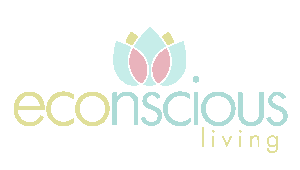
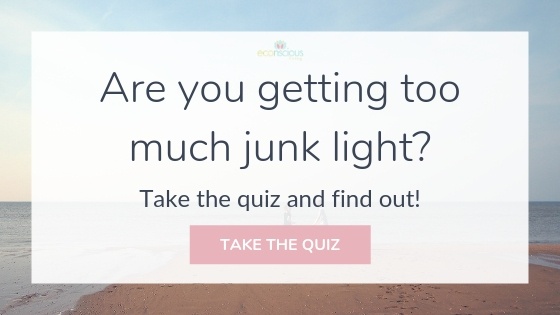


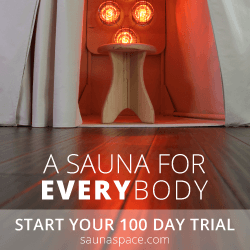
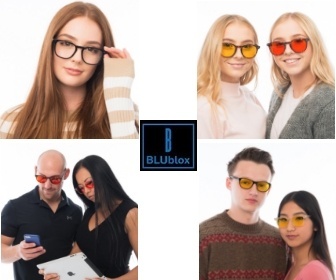

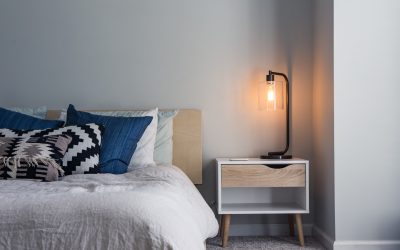
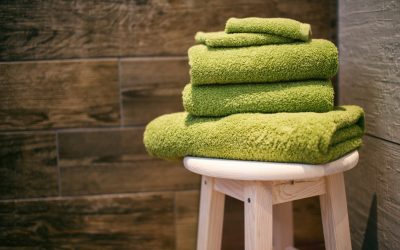
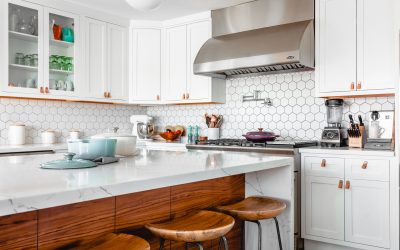
Hey lovely,
I am having a stressful time trying to figure out which light bulbs to buy for our bedroom.
I have read your post on light bulbs, which has been very helpful. Thank you so much. The link to Glo Lights doesnt work however. Can you recommend another place to buy healthy light bulbs from?
Am I right in believing that Halogen and Incandescent are the best? But no down lights?
Do you know anything about the LED red spectrum light bulbs from blockbluelight.com.au?
I really appreciate any help you can give me.
With love,
Lara
Thanks – I fixed that link! Yes Blockblue light are great – pls see my other more recent blog on light and sleep where I share lots of the lights I use in my home https://www.econsciousliving.com/what-light-is-best-for-sleep/ Block blue light also do a healthy LED downlight, and yes halogen and incandescent are better than conventional LED for light quality.